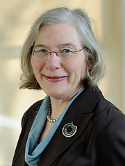Risk of colorectal cancer in the families of patients with adenomatous polyps Journal Article
| Authors: | Winawer, S. J.; Zauber, A. G.; Gerdes, H.; O'Brien, M. J.; Gottlieb, L. S.; Sternberg, S. S.; Bond, J. H.; Waye, J. D.; Schapiro, M.; Panish, J. F.; Kurtz, R. C.; Shike, M.; Ackroyd, F. W.; Stewart, E. T.; Skolnick, M.; Bishop, D. T.; and the National Polyp Study Workgroup |
| Article Title: | Risk of colorectal cancer in the families of patients with adenomatous polyps |
| Abstract: | Background. The adenoma-adenocarcinoma sequence in colorectal cancer suggests an increased risk of colorectal cancer in the families of patients with adenomatous polyps. Methods. A random sample of participants in the National Polyp Study who had newly diagnosed adenomatous polyps were interviewed for information on the history of colorectal cancer in their parents and siblings. The risk of colorectal cancer in family members was analyzed according to the characteristics of the patients with adenomas and in comparison with a sample of patients' spouses, who served as controls. Results. Among the patients with adenomas, 1199 provided information on whether they had a family history of colorectal cancer. After the exclusion of families for which information was incomplete and of 48 patients who had been referred for colonoscopy solely because they had a family history of colorectal cancer, there were 1031 patients with adenomas, 1865 parents, 2381 siblings, and 1411 spouse controls. The relative risk of colorectal cancer, adjusted for the year of birth and sex, was 1.78 for the parents and siblings of the patients with adenomas as compared with the spouse controls (95 percent confidence interval, 1.18 to 2.67). The relative risk for siblings of patients in whom adenomas were diagnosed before 60 years of age was 2.59 (95 percent confidence interval, 1.46 to 4.58), as compared with the siblings of patients who were 60 or older at the time of diagnosis and after adjustment for the sibling's year of birth and sex and a parental history of colorectal cancer. The risk increased with decreasing age at the time of the diagnosis of adenoma (P for trend <0.001). The relative risk for the siblings of patients who had a parent with colorectal cancer, as compared with those who had no parent with cancer, was 3.25 (95 percent confidence interval, 1.92 to 5.52), after adjustment for the sibling's year of birth and sex and the patient's age at diagnosis. Conclusions. Siblings and parents of patients with adenomatous polyps are at increased risk for colorectal cancer, particularly when the adenoma is diagnosed before the age of 60 or-in the case of siblings-when a parent has had colorectal cancer. |
| Keywords: | adult; controlled study; aged; middle aged; major clinical study; case-control studies; clinical trial; cancer risk; follow up; cancer incidence; colorectal cancer; controlled clinical trial; randomized controlled trial; proportional hazards models; incidence; colonic neoplasms; cohort analysis; risk factors; cancer screening; risk; colorectal neoplasms; colonoscopy; family history; cancer registry; sibling; relative; adenomatous polyp; genetic epidemiology; parent; random allocation; adenomatous polyps; life tables; nuclear family; humans; human; male; female; priority journal; article |
| Journal Title: | New England Journal of Medicine |
| Volume: | 334 |
| Issue: | 2 |
| ISSN: | 0028-4793 |
| Publisher: | Massachusetts Medical Society |
| Date Published: | 1996-01-11 |
| Start Page: | 82 |
| End Page: | 87 |
| Language: | English |
| DOI: | 10.1056/nejm199601113340204 |
| PUBMED: | 8531963 |
| PROVIDER: | scopus |
| DOI/URL: | |
| Notes: | Article -- Export Date: 22 November 2017 -- Source: Scopus |
Altmetric
Citation Impact
BMJ Impact Analytics
Related MSK Work








